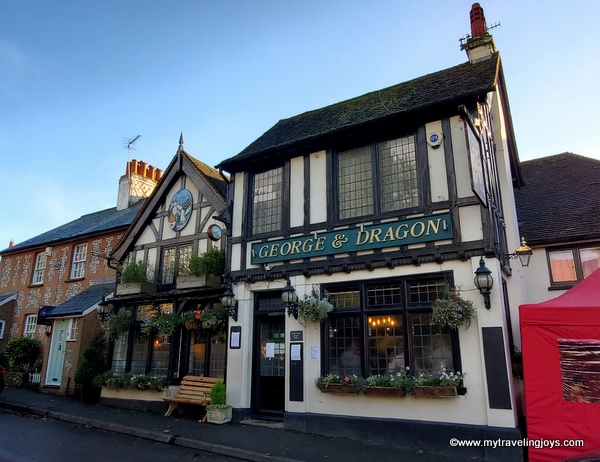Day Trip from London
With the rolling
green hills in the Kent countryside, it’s difficult to imagine a more
perfect place for naturalist Charles Darwin to have called home.
 |
| Autumnal colors in the Kent countryside surrounding Darwin's Home and gardens. |
A couple weekends ago, we cycled out to Darwin’s former home, a Georgian manor 15 miles south of London, for 40 years—from 1842 to 1882. Since it was raining in the morning, we cheated a bit and took the train to the town of Orpington and then cycled the 14km roundtrip which includes a steep hill leading up to the house.
Our day out revolved around using our English Heritage membership to gain entry to Charles Darwin’s Home for free, a stroll around the gardens and a pub lunch in the nearby village of Downe.Darwin was a leading figure in the world of biology and his whose contributions to the science of evolution transformed the way in which we all look at the natural world – well, most of us, I suppose. His home, also known as Down House, was the birthplace of “On the Origin of Species” – which caused quite a stir when the book was published in 1859. You can even see Darwin’s chair where he sat in his study while writing his famous book.Today’s Down House, owned by the English Heritage, serves as a small museum and homage to the Darwin family and his prolific career as a biologist and naturalist. Darwin and his wife, Emma, lived here with their 10 children. The house was a family home as well as place for Darwin to read, research and explore the natural world.
Our educational visit
opened up my eyes to how thorough Darwin was in his studies and theories. Plus,
the grounds are lovely to walk around, especially in the autumn.
This is just a
short photo post about our day trip from London to Downe and Darwin’s Home.
Village of Downe, UK
 |
| The Queen's Head was one of two pubs in the village of Downe, UK. |
 |
| The pub has a large outdoor beer garden as well as an enclosed tent. |
 |
| Since we were a bit wet from our rainy bike ride, we opted for a hearty lunch, and we tried to sit close to the outdoor heater in the beer garden. |
 |
| George & Dragon is the second village pub in Downe with a small beer tent. |
 |
| Lovely autumnal vines all the stone walls in Downe, UK, and some blue skies after the rain. |


























































